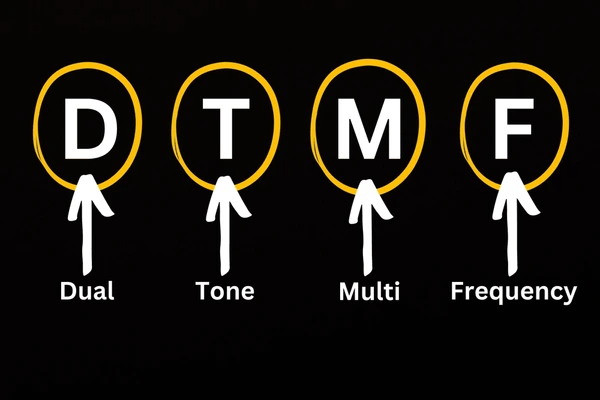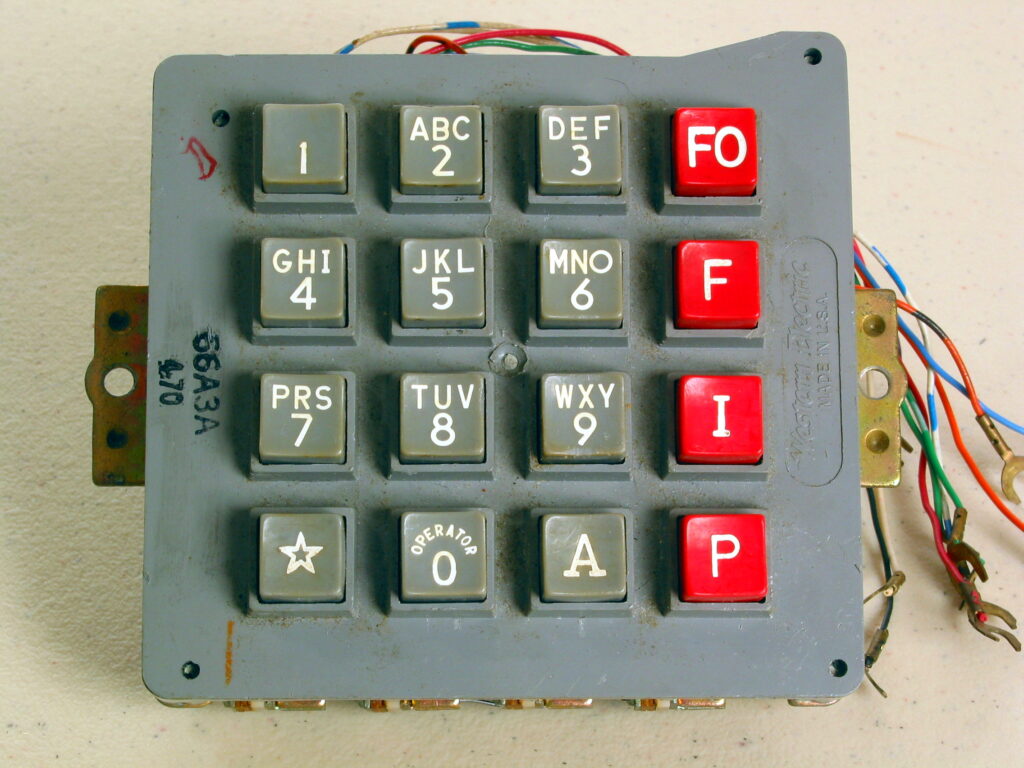
What is Dual-Tone Multi-Frequency?
DTMF (Dual-Tone Multi-Frequency) is a technology used in telecommunications to send data over a telephone line. It’s commonly found in touch-tone phones, where each key press produces a unique combination of two frequencies. These tones are then decoded by systems to determine the input. DTMF enables a variety of interactive services, such as voice mail, telephone banking, and automated customer service systems, making it a vital part of modern telecommunication. In this article, we’ll explore how DTMF works, its uses, and its significance in the telecommunications industry.

How Does DTMF Function?
Understanding the Basic Principle of DTMF
DTMF signaling works by generating two simultaneous sound frequencies for each key press on a telephone keypad. These frequencies come from two distinct groups: low and high frequencies. For instance, pressing the “1” key creates a combination of 697 Hz and 1209 Hz. Similarly, pressing the “2” key generates a combination of 697 Hz and 1336 Hz. This system ensures that each key produces a unique tone pair.
Frequency Groups in DTMF
The frequencies used in DTMF are split into two groups. The low-frequency group includes 697 Hz, 770 Hz, 852 Hz, and 941 Hz. The high-frequency group consists of 1209 Hz, 1336 Hz, 1477 Hz, and 1633 Hz. Each key press triggers a combination of one frequency from each group, enabling the system to recognize specific inputs.
How DTMF Signals are Transmitted
Once a key is pressed, the corresponding dual-tone signal is transmitted over the telephone line. DTMF receivers detect these tones and identify the key pressed based on the frequency combination. This process allows for accurate data transmission in telecommunication systems.
DTMF Phone Keypad Mapping
Frequency Ranges in DTMF Signaling
DTMF signaling uses frequencies ranging from approximately 697 Hz to 1633 Hz. These frequencies are divided into two groups: low tones and high tones. Low tones represent the rows (1 to 4) on the keypad, while high tones represent the columns (A to D).
Key Mapping for DTMF Keypad
- Row 1: 697 Hz
- Row 2: 770 Hz
- Row 3: 852 Hz
- Row 4: 941 Hz
- Column A: 1209 Hz
- Column B: 1336 Hz
- Column C: 1477 Hz
- Column D: 1633 Hz
For example, pressing the “1” key produces a combination of 697 Hz and 1209 Hz. Similarly, the “A” key generates 941 Hz and 1633 Hz.
Standard Keypad Layout
The standard DTMF keypad has 12 keys. These include digits 0-9, as well as the * (star) and # (pound) signs. Each key corresponds to a specific frequency combination for accurate signal transmission.

Benefits of DTMF in Telecommunication Systems
- Efficient Data Transmission: Dual-tone signaling transmits data over telephone lines using two-tone combinations. This method is faster and more efficient than traditional pulse dialing, which requires multiple electrical impulses. As a result, it reduces the time and effort needed for data entry.
- Enhanced Compatibility and Versatility: This signaling system is supported by almost all telephone devices, making it highly compatible with various communication systems. This widespread support ensures seamless integration across different devices and networks, improving versatility.
- Improved Accuracy and Reliability: By using two simultaneous tones, this system minimizes errors and misinterpretations. The dual-tone approach is resistant to noise and interference, ensuring more accurate signal detection and processing.
- Remote Control and Automation: This technology allows for remote control of devices and systems, such as robotic vehicles or home appliances. It enables automation in various settings, including industrial and household applications.
Real-world Applications of DTMF
Telecommunications
This technology is essential in telephone dialing and signal transmission. It allows users to input commands and digits via a touch-tone phone. It plays a key role in call routing and powering interactive voice response (IVR) systems.
Home Automation
In home automation, this technology helps control appliances remotely. Using a mobile phone, users can transmit control signals over telephone lines. This approach is cost-effective and energy-efficient, making automation easier than ever.
Robotics
Robotic control systems also benefit from this technology. It enables long-range communication, making remote-controlled robots easier to operate. Unlike microcontrollers, it simplifies system design, enhancing performance and ease of use.
Emergency Services
In emergencies, this technology transmits urgent codes or messages through telephone lines. It ensures rapid, reliable communication, which is vital for fast response in rescue operations.
Industrial Automation
In industries, this system enhances remote control and monitoring. It outperforms traditional remote controls, such as infrared or Bluetooth, by providing long-range capabilities for more reliable operation.
Security Systems
Security systems also rely on this technology for alarm management. Users can remotely arm or disarm systems through their telephone, a practical feature when physical access to control panels is limited.
Financial Transactions
In finance, this system facilitates secure phone banking. It allows users to securely input commands and perform transactions, providing convenience without needing access to a computer.
Healthcare
In healthcare, this system enables remote monitoring and control of medical devices. It supports telemedicine, offering efficient care by allowing healthcare professionals to monitor patients from a distance.
DTMF and its Role in Interactive Voice Response (IVR)
- Basic Functionality: DTMF signaling enables users to interact with IVR systems through tone pairs representing digits and characters. These tones are produced by pressing keys on a telephone keypad.
- Navigation and Input: In IVR systems, these tones guide users through menus, help them make selections, and enter data. Users follow audio prompts and respond by pressing the corresponding keys to choose their options.
- Integration with Voice Recognition: While this technology ensures reliable user input, many modern IVR systems also feature speech recognition. This allows users to speak their choices, and the system converts the spoken words into corresponding tones.
- Efficiency and Speed: DTMF input is faster than speech recognition for simple tasks. This makes it an efficient choice for managing high call volumes and handling complex transactions.
- Challenges and Solutions: One challenge is ensuring accurate tone recognition, especially across different telephone lines and devices. Solutions like preemphasizing high-frequency tones can help maintain signal clarity.
- Security Considerations: While this system is efficient, it may be vulnerable to security risks. For example, fuzzing attacks could exploit unusual inputs, causing errors or system crashes.
The Importance of DTMF in Modern Networks
In today’s interconnected world, DTMF plays a crucial role in enhancing the functionality of modern networks. Its ability to enable quick, reliable communication through telephony systems, IVR interfaces, and automated services makes it an indispensable tool. Whether it’s for seamless customer service, remote control systems, or secure transactions, DTMF continues to be vital in ensuring efficiency and accessibility. As technology advances, its integration with voice recognition and other innovations only strengthens its value in various applications. Understanding DTMF’s importance highlights its lasting impact on communication systems and its role in shaping user experiences across industries.
To get detailed scientific explanations of DTMF, try Patsnap Eureka.

